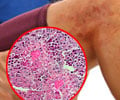Asthma is one of the commonest chronic illnesses that affects school going kids. The disease results from a combination of environmental and genetic factors that cause inflammation in the airways leading to shortness of breath. The complications of the illness can be severe and life-threatening if left unattended.
According to a New England Journal of Medicine study, children are less likely to develop asthma when they are exposed to a wide variety of environmental microorganisms, especially the ones found in farming environments.In a recent study conducted by Dr. Markus J. Ege, Professor Erika von Mutius and colleagues, it was found that growing up in and around a farm not only gets children to have access to cleaner air and fresh vegetables but it also gives them the exposure to a greater range of microorganisms which actually helps in protecting them from developing asthma.
Dr. Ege and colleagues conducted two cross-sectional studies which compared children living “on farms” with “non-farm” dwelling children. In one study - PARSIFAL (Prevention of Allergy — Risk Factors for Sensitization in Children Related to Farming and Anthroposophic Lifestyle), mattress dust was collected and analyzed for bacterial DNA signatures. In the second and advanced study- GABRIELA (Multidisciplinary Study to Identify the Genetic and Environmental Causes of Asthma in the European Community), airborne dust was collected from children's bedrooms and cultured for microbes.
Investigators found that broadened exposure of children living on farms was associated with a significantly lower risk for asthma and atopy (genetic tendency to develop the classic allergic diseases) than those in the reference group. Atopy prevalent among farm dwellers was however not influenced by microbial diversity.
Dr. Ege feels that a particular combination of species introduced early in life may protect against asthma and allergies by acting on the immune system. Alternatively, these microorganisms may prevent asthma – inducing species from growing in the respiratory tract. He further adds that certain species of bacteria and fungi may be of special interest in this regard.
As the result provides "only a low-resolution picture”, now the team of investigators on the study hopes to identify specific bacteria with a long-term goal of identifying a candidate that would serve as the basis of a live vaccine against asthma, leading to new preventive strategies.
The researchers conclude that the risk of asthma is lower under conditions where the microbial population is more diverse.
Reference: Exposure to Environmental Microorganisms and Childhood Asthma Markus J. Ege, M.D., Melanie Mayer, Ph.D., Anne-Cécile Normand, Ph.D., Jon Genuneit, M.D., William O.C.M. Cookson, M.D., D.Phil., Charlotte Braun-Fahrländer, M.D., Dick Heederik, Ph.D., Renaud Piarroux, M.D., Ph.D., and Erika von Mutius, M.D. for the GABRIELA Transregio 22 Study Group N Engl J Med 2011; 364:701-709February 24, 2011.
Source-Medindia











